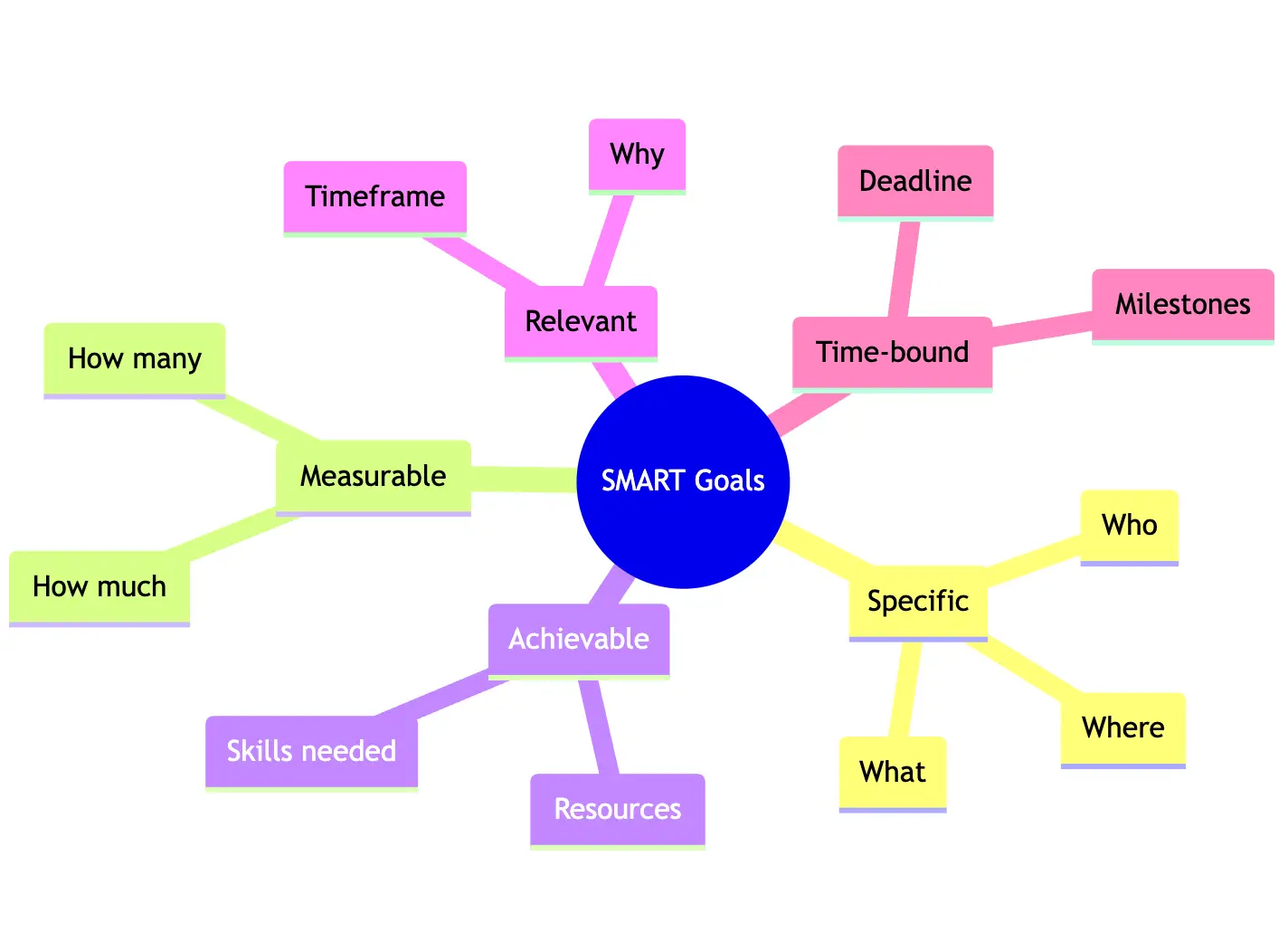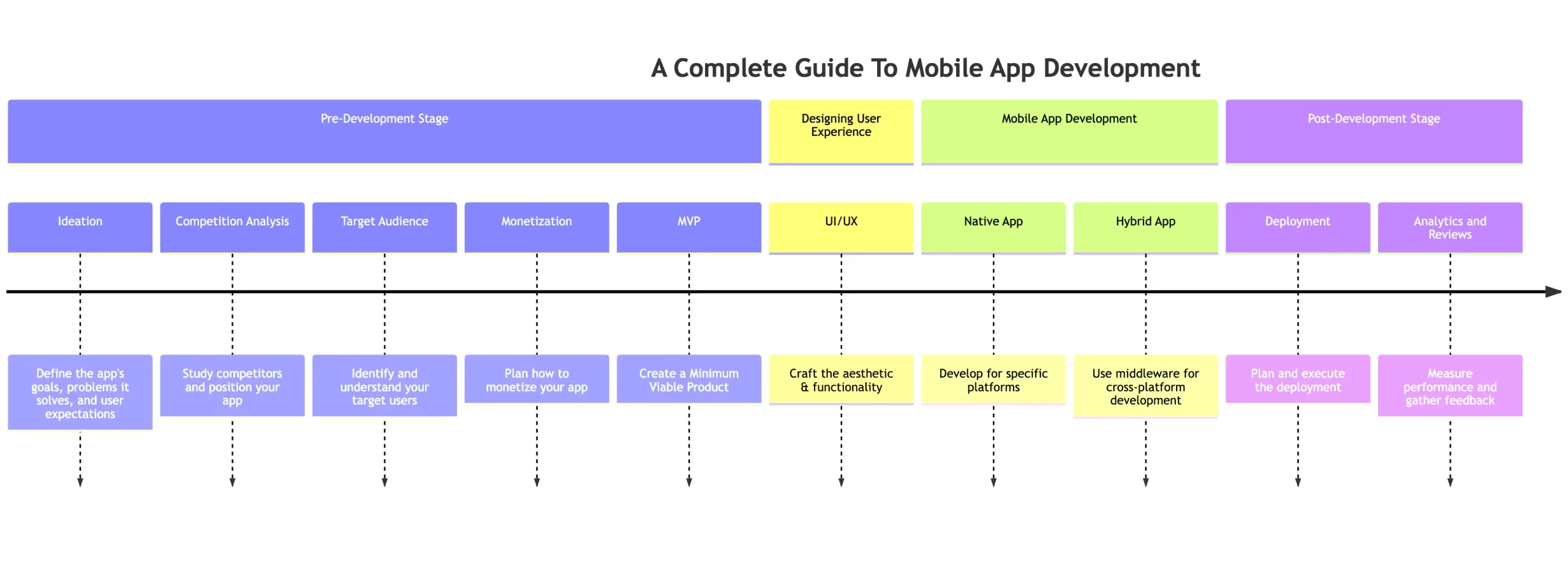Business goals are essential for guiding a company’s growth and progress. They provide direction, motivation, and a clear vision for where the organization aims to be in the future. Well-defined goals can have a major impact on a company’s success.
💡 Setting clear business goals is critical for several reasons:
- They create focus and align efforts. With explicit goals, everyone understands what needs to be accomplished. This focuses on work and prevents disjointed efforts that lead nowhere.
- They enable measurement and tracking. You can’t manage what you don’t measure. Goals provide tangible metrics to assess progress over time. This allows you to track outcomes and make adjustments as needed.
- They motivate and inspire staff. Goals give teams a shared mission to work towards. This drives engagement, effort, and passion to push forward.
- They communicate priorities. Goals make it clear to staff and stakeholders what matters most. This ensures focus on the right objectives.
- They drive growth and improvement. Goals stretch capabilities and skills. Aiming for ambitious targets encourages teams to find innovative solutions and new ways to excel.
👉🏾 Other Swiftspeed Users also read: App Name Detailed Guidelines and Best Practices for Success
In business today, goals are a must for guiding strategic decisions and taking steps toward desired growth and progress. Clearly defined goals empower companies to sustainably scale, build capabilities, and satisfy customers. This article will explore best practices for setting and achieving robust business goals.
10 Expert Strategies to Catapult Your Business Goals into Reality

1. Set SMART Goals
One of the most important things you can do to achieve your business goals is to make sure they are SMART goals. SMART is an acronym that stands for:
- Specific – Your goals should be very clear and detailed, not vague. Saying “increase sales” is vague, whereas “increase sales of Product X by 20% this quarter” is specific.
- Measurable – You should be able to quantify your goals so you can track progress. Having metrics attached to your goals, like revenue, number of customers, etc, makes them measurable.
- Achievable – Goals should be challenging but attainable, not unrealistic. Make sure you have the resources and capabilities to reasonably accomplish the goal.
- Relevant – Goals should align with overall business objectives and strategies. Don’t set random goals, but tie them to overarching priorities.
- Time-bound – Every goal needs a deadline; setting a timeframe creates accountability. Identify a target date or quarter.
A well-designed mobile app can amplify your brand’s visibility and engage your target audience. But it’s not just about having the tool; it’s about maximizing its utility. Push notifications, for instance, can keep your customers in the loop about your latest offers or updates. Social media platforms are also your allies in this journey, invaluable for connecting with your target audience and building brand awareness. They’re not just platforms; they’re your modern-day signal flares and flags.
Setting SMART goals creates clarity and focus, keeps teams aligned, and enables monitoring of progress. Vague goals lead to a lack of direction and make it hard to determine success. To get everyone rowing in the same direction, take the time to set specific, measurable goals tied to business needs, with deadlines. To put it plainly, if you’re not sure where your business is headed, watch Simon Sinek’s TED Talk about how strong leaders inspire action.
2. Prioritize Your Goals
Setting goals is important, but determining which goals should take priority is equally critical for achieving success. There are several techniques businesses can use to thoughtfully prioritize their objectives:
- Impact vs. Effort Matrix
An impact vs. effort matrix is a useful prioritization framework. Goals are mapped on a 2×2 grid with effort on one axis and potential business impact on the other. Goals that require less effort but offer greater impact are typically prioritized first. Conversely, goals with high effort and low impact tend to be deprioritized. This helps focus energy on quick wins and high-value goals.
- Identify Dependencies
Review goals to identify dependencies. Some goals cannot be accomplished until others are achieved first. For example, a company may want to eventually expand globally but needs to first build domestic operations and infrastructure. Sequencing goals to resolve dependencies ensures work streams align.
- Consult Key Stakeholders
Gather input from important stakeholders like executives, investors, and customers about which goals are most critical to pursue first. Stakeholder needs should factor heavily in prioritization decisions. Periodically re-survey stakeholders as priorities and business conditions evolve.
- Weigh Against Core Business Objectives
Evaluate how strongly each goal supports core business objectives and strategies. Goals most aligned with critical success factors should take precedence. This ensures priority goals have direct relevance to strategic outcomes.
- Cost/Benefit Analysis
Conduct a cost/benefit analysis on goals, estimating required resources, costs, risks, and potential ROI. Pursue the goals projected to provide the greatest return balanced against the investment required. Tackle more resource-intensive goals later.
Carefully prioritizing goals based on importance, dependencies, and cost/benefit considerations will help focus resources on the objectives with the greatest potential impact on strategic success. Pursuing too many goals simultaneously dilutes efforts, so ranking based on thoughtful criteria leads to stronger execution.
3. set an Action Plan
Once you’ve set clear, specific business goals, the next step is to create a detailed action plan that outlines how you will achieve each goal. An effective action plan serves as a roadmap and helps translate your goals into concrete strategies and tasks.
When making an action plan, consider the following steps:
- Break down goals into smaller steps. Don’t try to tackle everything at once. Determine the incremental objectives that build towards the end goal. This makes the goal more manageable.
- Set a timeline. Attach target deadlines to each action step so there is a sense of urgency and accountability. But make sure timeframes are realistic.
- Assign owners. Who will be responsible and accountable for each task? Distribute responsibilities across your team.
- List the resources needed. Consider the budget, equipment, tools, and skills required at each stage. Anticipate potential resource constraints ahead of time.
- Build in milestones. Identify key progress markers along the way to track results. Milestones help motivate your team when they reach interim accomplishments.
- Identify risks and mitigation. For each step, note the potential risks and prepare a contingency plan. This proactive approach prevents unexpected obstacles from derailing your goals.
- Schedule regular reviews. Set reminders to re-evaluate the plan frequently. Adjust timelines, owners, and resources as needed based on changing business conditions.
With a detailed, thoughtful action plan in place, your business goals transition from ideas into executable strategies. The action plan keeps your team aligned, motivated, and focused on the end result. Update and adjust it regularly to drive continual progress.
👉🏾 Other Swiftspeed Users also read: 13 Powerful Mobile App Monetization Strategy You Can Use in 2023
4. Get Buy-In from Your Team
Getting your team aligned with your business goals is crucial for success. Without buy-in from employees, achieving ambitious objectives becomes much harder. Here are some tips for gaining support and enthusiasm from your staff:
- Communicate goals effectively – Don’t just issue top-down directives. Explain to employees why the goals matter and how they align with the company’s overall vision. Show how each person contributes.
- Make goals visible – Print out goal summaries and display them in office areas. Refer to them in meetings. Reinforce goals visually so they stay top of mind.
- Solicit input – Get employees involved early when setting goals. Ask for their insights on potential challenges and opportunities. Incorporate feedback to improve goals.
- Connect goals to individual roles – For each goal, explain which employees and teams are responsible for which pieces. Outline expectations and necessary support.
- Offer incentives and recognition – Consider offering small bonuses or extra time off when major goals are achieved. Recognize individuals who help meet objectives.
- Foster open communication – Maintain open channels for employees to ask questions, voice concerns, and propose ideas related to company goals.
- Track progress transparently – Provide regular updates on how the company is trending against its goals. Celebrate small wins along the way.
Securing genuine commitment from your staff takes effort, but it pays dividends. Employees who feel aligned with company goals give their best effort and drive better results.
5. Align The Company Culture
A company’s culture includes its values, beliefs, behaviors, attitudes, and environment. To successfully achieve business goals, the culture needs to align with and support those goals. Otherwise, culture can become an obstacle. Here are some ways to align company culture with your goals:
- Communicate goals clearly and often. Employees need to understand the goals and vision behind them. Share goals frequently through meetings, emails, posters, etc.
- Lead by example. As a leader, model the mindset, work ethic, and values you want employees to adopt. Your actions are more convincing than words.
- Recruit and retain aligned talent. Seek out and keep employees who share the mindset required to achieve the goals. Culture starts with the people.
- Train for needed skills. Provide training to instill the knowledge, abilities, and attitudes linked to your goals. Development expands what your culture can accomplish.
- Reward goal-supporting behavior: Recognize and incentivize actions that line up with goal achievement, like collaboration, innovation, or customer focus.
- Adjust policies and practices. Update company systems and processes to facilitate goal-aligned behavior vs unnecessary bureaucracy.
- Redesign workspace. Consider how the physical or virtual work environment could better enable the culture and behaviors needed to hit your targets.
- Lead change management. New goals may require transforming culture. Carefully manage change by explaining the “why,” generating buy-in, and providing support.
Aligning culture with business goals takes ongoing attention. But it enables the attitudes, morale and teamwork necessary for goal achievement. With a supportive culture, your strategy can thrive.
6. Delegate Resource Accordingly
Proper resourcing is critical for achieving business goals and objectives. Many goals fail not because of poor planning or lack of effort, but due to inadequate resources being allocated. As the saying goes, “If you fail to plan, you plan to fail.” This is especially true when it comes to resourcing goals appropriately.
When establishing goals, it’s important to analyze the resources required to successfully complete each one. Resources can include staffing, budget, equipment, facilities, training, and any other assets needed. Without thoroughly understanding resource needs, companies risk overcommitting current capacity. This makes it impossible for teams to deliver on goals as expected. You can take a free project management certification course on aptLearn for better understanding of managing people and business resource.
There are several best practices around resourcing goals:
- Identify both current staffing levels and any missing skills or capacities needed. Factor these needs into budget and hiring plans.
- Create a detailed timeline of activities required to achieve each goal. Estimate the resources needed at each stage.
- Build in buffers for unexpected roadblocks or delays. Allocate extra capacity instead of planning resources too tightly.
- Secure buy-in across the organization for securing resources tied to top-level goals. Make this a leadership priority.
- Re-evaluate resourcing periodically as goals progress. Shift resources between goals or teams as needed.
- Supplement internal resources with external vendors or consultants if needed and affordable.
Proper goal resourcing sets teams up for success. When equipped with sufficient budgets, staffing, tools, and other assets, an organization is positioned to execute on strategic objectives. This leads to better goal achievement and business performance over time.
7. Track Progress
It’s critical to track progress towards your goals so you can determine what’s working and what’s not. This allows you to course correct when needed.
Identify 3-5 key performance indicators (KPIs) or metrics for each goal that will indicate progress towards completion. These will vary based on your specific goals, but some examples include:
- For a revenue goal – monthly recurring revenue, sales pipeline growth, new customers acquired
- For a marketing goal – website traffic, leads generated, conversion rates
- For a customer satisfaction goal – Net Promoter Score, customer retention rates, survey feedback
- For a product development goal – new features launched, bugs resolved, user adoption rates
Set specific targets for each metric that reflect success. Track them on an ongoing basis using analytics tools, reports, or a simple spreadsheet.
Analyze the data at least monthly to spot trends and determine if you’re on track. If metrics are falling short, explore what’s causing it by digging into other reports or talking to your team.
Make any necessary adjustments to get back on track, like shifting budgets or resources. Continually optimizing based on measured outcomes is key to achieving your goals.
Celebrate wins when metrics show you’ve hit interim targets too. This keeps everyone motivated until the end goal is fully accomplished.
8. Course Correct
No matter how carefully crafted your goals and plans are, you’ll inevitably encounter roadblocks or situations where your progress may fall behind. This is completely normal, but to get back on track you need to course correct.
The key is to frequently track your progress so you can identify lags early before they snowball. If certain goals or milestones are taking longer than anticipated, take time to understand why. Look at what’s working vs. what’s stalled, and think about what needs to change.
Some tips for getting back on track:
- Re-evaluate priorities and resources. Take a fresh look at your goals – is the sequencing or priority still right based on new circumstances? Do you need to redistribute resources to refocus on the most critical goals?
- Refine processes. Analyze the processes supporting key goals. Identify and fix inefficiencies or bottlenecks limiting progress.
- Motivate your team. Rally the team and reinforce the importance of shared goals. Restate the vision to realign. Provide additional training or support for struggles.
- Get creative. Brainstorm alternative solutions and approaches to break through barriers. Get an outside perspective from a mentor or advisor.
- Reset timelines. Adjust target dates for goals impacted by delays. Ensure the revised timelines are realistic. Extend final deadlines only when necessary.
- Communicate changes. Keep stakeholders informed if goals, priorities or timelines shift. Transparency helps maintain buy-in.
- Learn from setbacks. Don’t dwell on failures, but take time to reflect on learnings that can inform future plans and goals.
Staying nimble, optimizing processes continually and keeping your team motivated will enable you to get back on track quickly. Keep the end goal in sight, but don’t be afraid to course correct when needed along the way. With the right adjustments, you can still achieve your most important business goals.
9. Celebrate Wins
Achieving business goals is hard work, so take time to recognize accomplishments along the way. Celebrating wins, no matter how small, provides positive reinforcement that keeps teams motivated.
Consider throwing a party or treating the team to lunch when a goal is met. Send out a company-wide congratulatory email highlighting the team’s achievement. Or find unique ways to commemorate the win, like framing the goal statement.
Publicly rewarding teams or individuals who contributed to the goal’s success further reinforces the desired behaviors and performance. Be generous with genuine praise and make sure everyone knows their efforts mattered.
Celebrations also provide opportunities for leaders to connect goals back to the company’s vision and strategy. Remind teams how their hard work is paying off in moving the organization forward.
Marking wins builds camaraderie and identity among team members. It creates momentum to fuel future goals while letting people feel appreciated. Most importantly, celebrating achievements positively reinforces the link between goal-setting and success.
Build an app – without coding
Create premium apps without writing a single line of code, thanks to our user-friendly app builder. Build an app for your website or business with ease.
10. Building a Strong Online Presence
Your online presence is your business card, your storefront, and your first interaction with potential customers. And let’s face it, in a world where you can order anything from a pizza to a personal trainer with a few taps on your phone, your business needs to be where the
First impressions matter, and your website is often where potential customers make that first impression of your business. So, make it count. Ensure it’s not just visually appealing but also user-friendly. Nobody likes a slow website; it’s like walking into a cluttered store. You lose interest before you even begin. Optimize your site’s loading speed and make sure it’s responsive. Whether someone’s browsing on a laptop in a café or scrolling through their phone in bed, your website should look and function perfectly.
Creating an App with Swiftspeed App Builder: No Coding, No Problem
Now, let’s talk about mobile apps. Recently, a lot of people want convenience at their fingertips. That’s where a mobile app comes in handy. But hey, not everyone is a coding genius, and that’s perfectly fine. With Swiftspeed App Builder, you can create an app without writing a single line of code. And the best part? You can start for free. It’s like having a tech team in your pocket.
Promoting Your App with App Store Optimization
Creating an app is one thing; making sure people find it is another. App store optimization is your best friend here. Think of it as SEO (Search Engine Optimization) but for the app store. Once your app is ready, you need to make sure people can find it. That’s where App Store Optimization (ASO) comes in. It’s like your app putting on its best suit for a job interview. Use keywords wisely in your app’s title and description, and encourage satisfied users to leave reviews. Use relevant keywords in your app’s title and description. Encourage satisfied users to leave positive reviews. It’s like asking happy customers to shout from the rooftops about how great you are.
SEO: Search Engine Optimization
SEO isn’t glamorous, but it’s essential. Think of it as the plumbing of your online presence. It’s not visible, but when it’s not working, you’ll notice. Incorporate strategic keywords naturally in your content and build quality backlinks. Make sure your website and app are optimized for mobile, as that’s where most of the browsing happens these days.
Lastly, don’t underestimate the power of good old SEO. It’s the backbone of your online visibility. From your website to your mobile app, sprinkle those strategic keywords naturally throughout your content. Build quality backlinks and ensure your site and app are mobile-friendly.
👉🏾 Other Swiftspeed Users also read: Complete list of top mobile app stores in 2024
Conclusion
Wrapping up, it’s clear that achieving your business goals in 2024 is no small feat; it demands a well-thought-out strategy and meticulous execution. The roadmap starts with setting SMART goals that are both ambitious and achievable. These goals serve as your North Star, guiding each business decision you make. Coupled with a comprehensive business plan, they provide the framework within which your business operates. But remember, a plan is only as good as its execution. This is where building a strong team comes into play.
A team that not only understands your vision but is also skilled and motivated enough to help you realize it is invaluable. Their collective efforts can lead to innovative solutions and creative strategies, which are essential for achieving your business goals.
The second layer of this roadmap involves understanding your market and customers. Market research and data analytics aren’t just buzzwords; they’re your eyes and ears, providing insights that can make or break your strategies. Knowing your target audience’s needs and preferences allows you to tailor your products, services, and even customer interactions to better meet their expectations. This is further complemented by a strong online presence, which serves as your digital storefront. Whether it’s through a user-friendly website or a feature-rich mobile app, your online platforms are where your customers interact with your brand. Optimizing these touchpoints can significantly impact your business goals, especially in a digital-first world.
Lastly, do not forget the power of continuous learning and adaptability. The business landscape is ever-changing, influenced by technological advancements, market trends, and even global events. Staying updated on these changes and being willing to adapt your strategies accordingly is crucial. This involves not just you but also fostering a culture of continuous learning within your team. Moreover, effective marketing strategies and strong customer relationships act as the fuel that propels your business engine, driving you closer to your business goals. By integrating these multi-faceted strategies—from setting clear objectives and building a competent team to leveraging data analytics and maintaining strong customer relations—you’re not just setting your business up for success; you’re future-proofing it.







Thanks. I do a business course and your info has helped me alot.
We are glad you found the article helpful.
Thank you so much for this idea you’ve given to us to go on our business
You are welcome. We wish you success